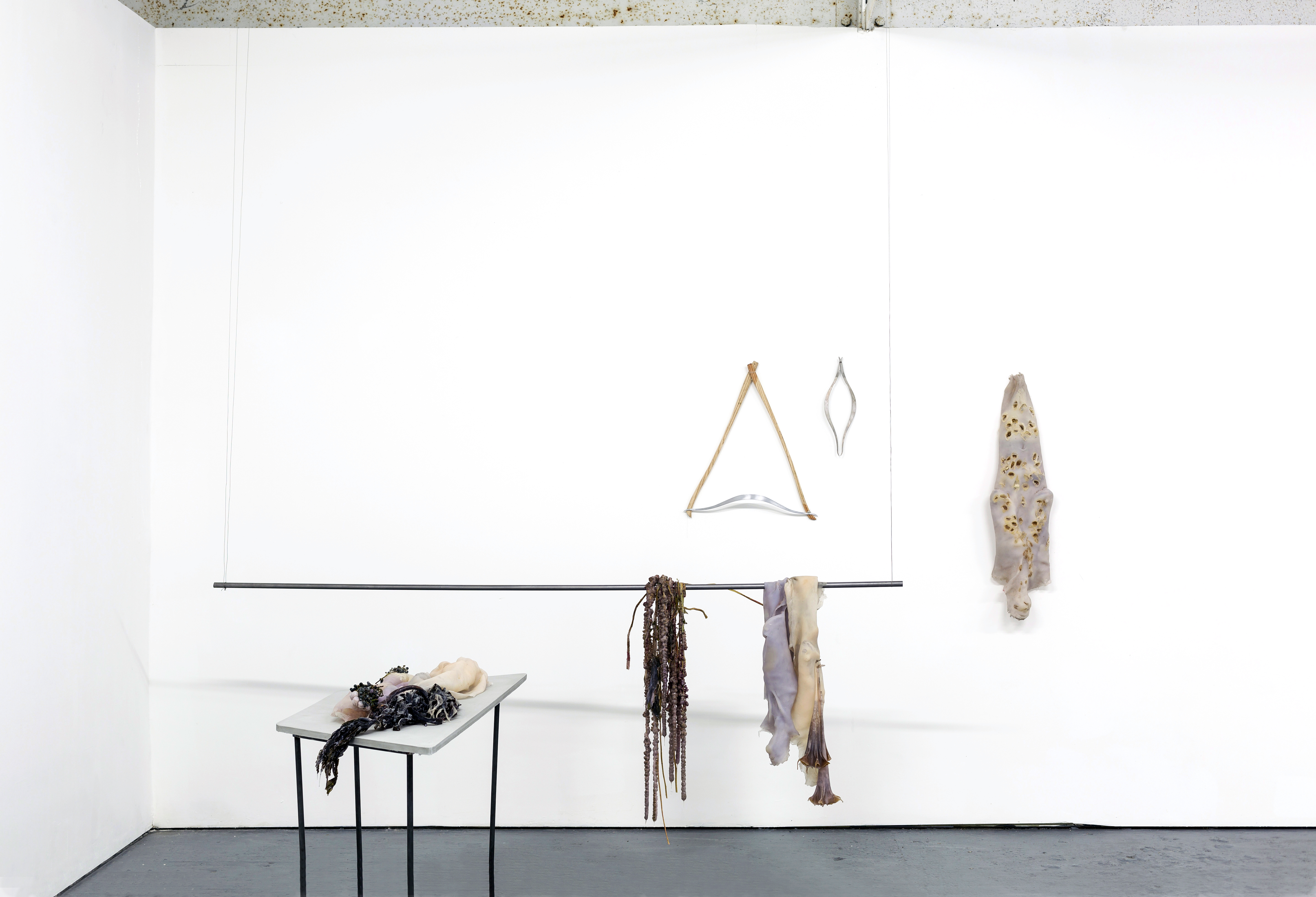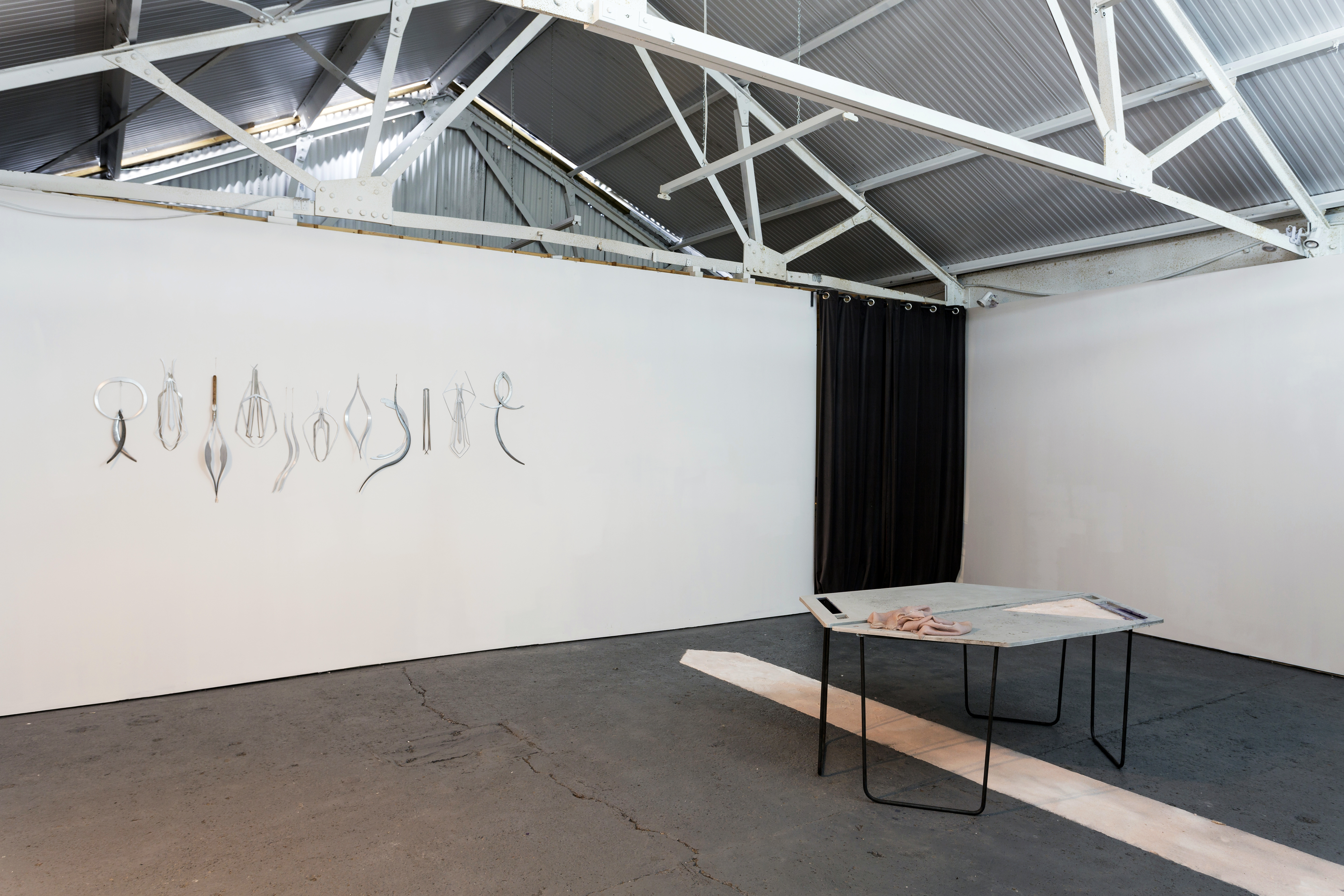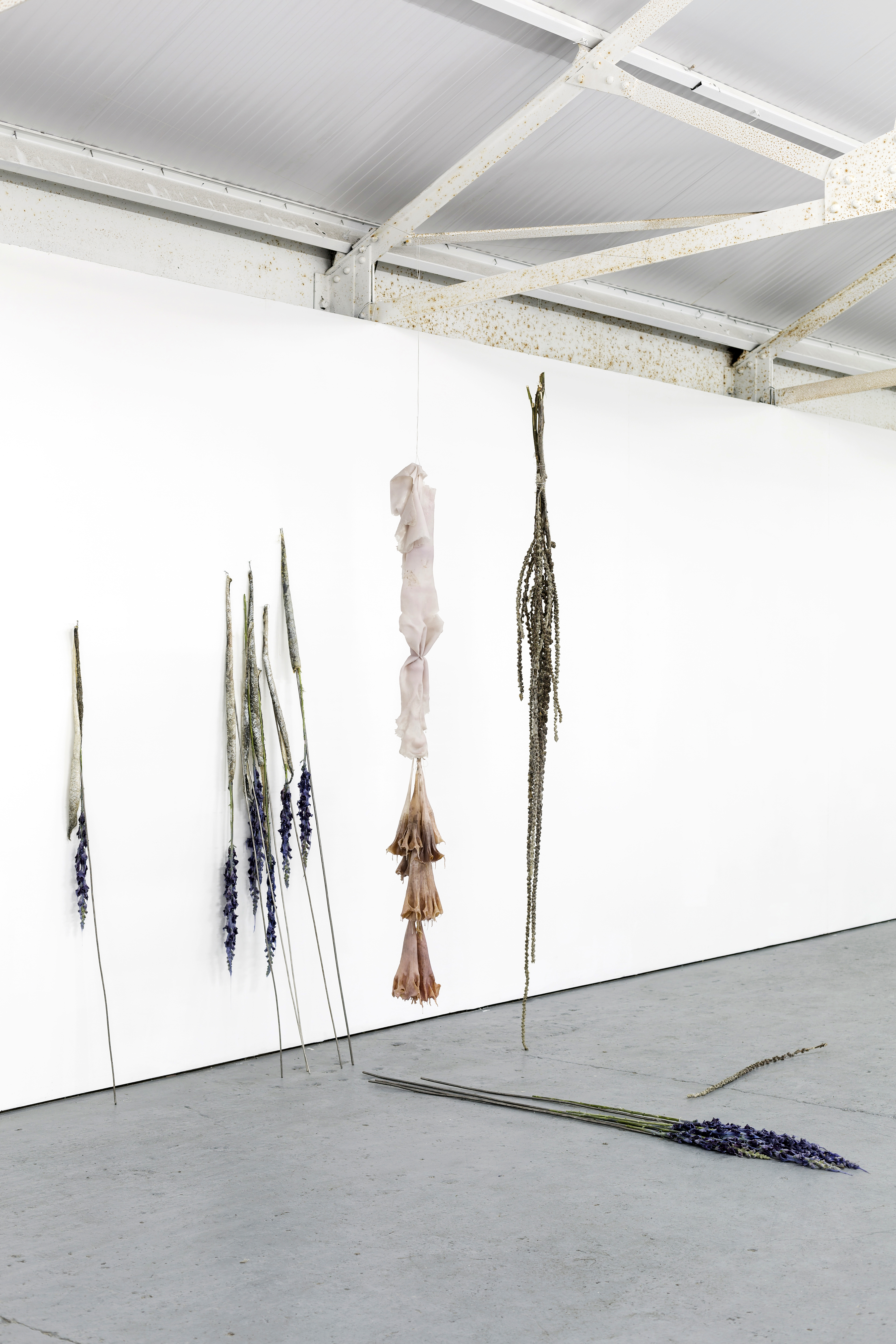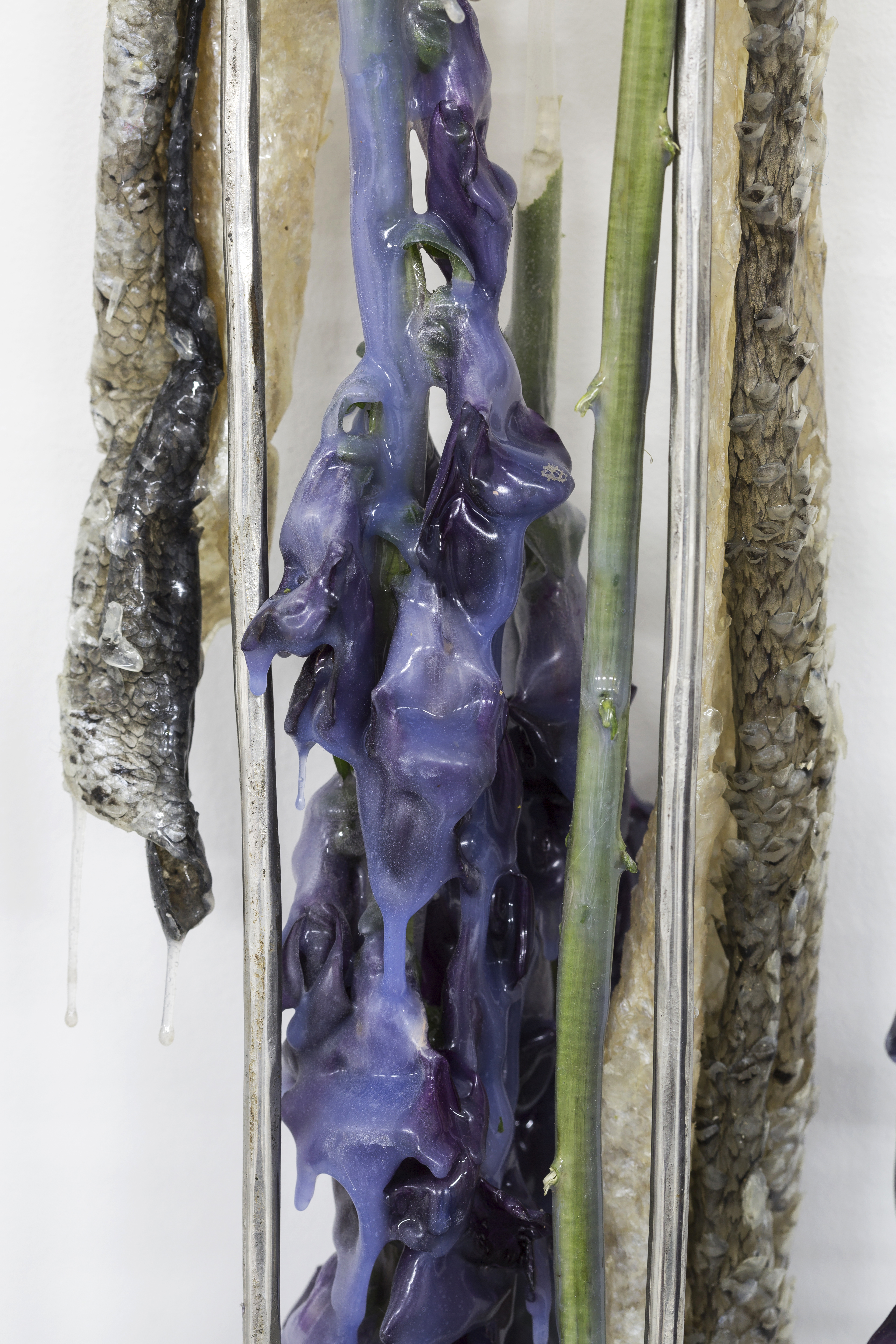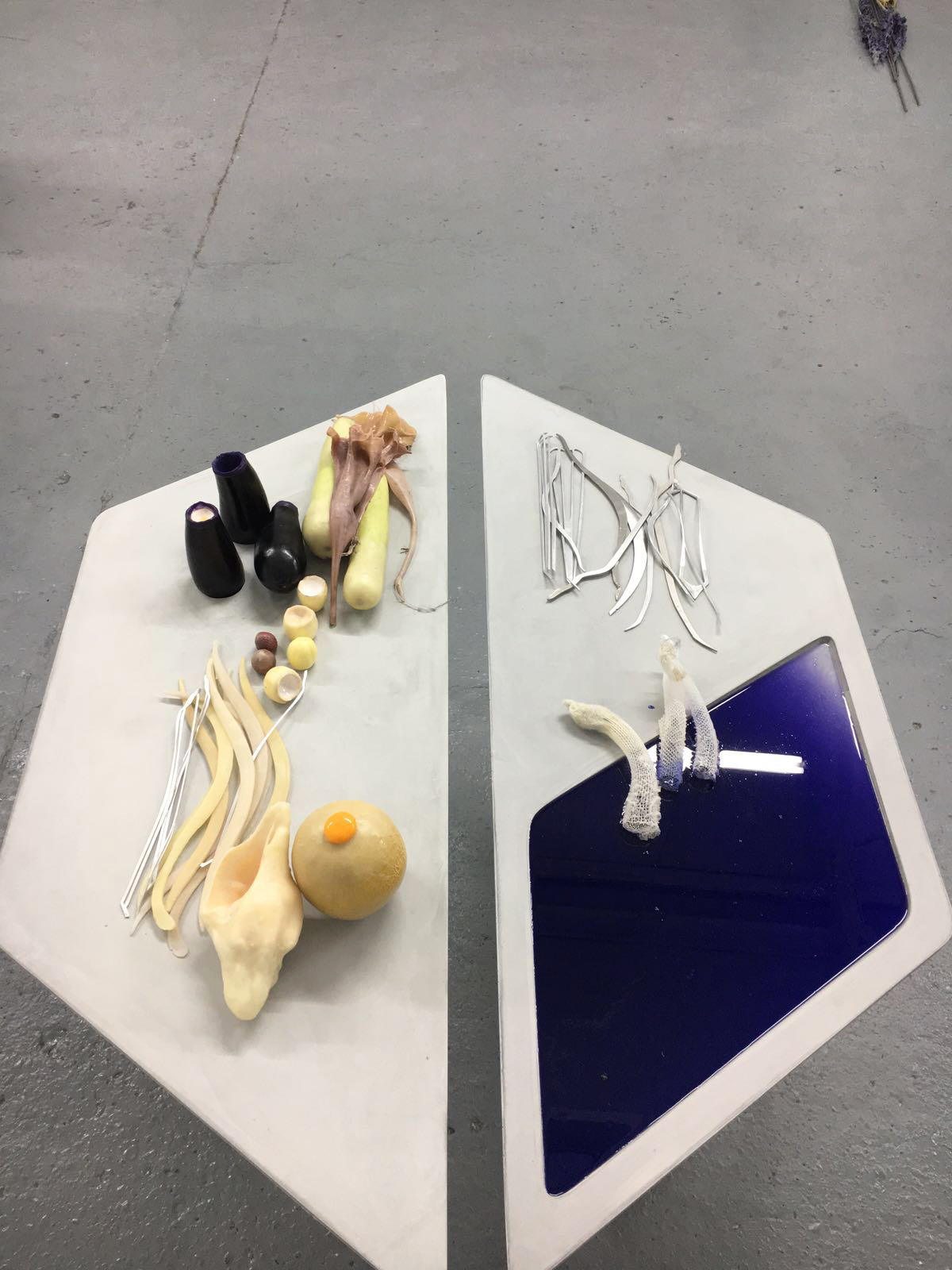![]()
Lupercalia (Station 2), 2016. 210 x 180 x 230 cm approx. Steel, silicone, dried foxgloves, burgmansia, amaranthus, aluminium, fish skin, sea weed, ivy berries, resin, ash wood, thread.
![]()
Lupercalia (Station 3), 2016, 210 x 180 x 230 cm approx. Steel, silicone, dried brugmansia, snapdragons, fish skin, resin, thread.
![]()
Lupercalia (Station 3), 2016, 210 x 180 x 230 cm approx. Steel, silicone, dried brugmansia, snapdragons, fish skin, resin, thread.
![]()
Detail: Lupercalia (Station 3), 2016. Steel, silicone, dried brugmansia, snapdragons, fish skin, resin, thread.
![]()
Lupercalia (Station 4) 2016, 250 x 290 x 120cm approx. Silicone, steel, jesominte, ceramic, glass, paper, silk, red cabbage infused salt water, pottastium aluminium
sulphate, dried delphinium, polyesther, cotton, aluminium, oak. thread.
![]()
Detail: Lupercalia (Station 4) 2016, 250 x 290 x 120cm approx. Silicone, steel, paper, silk, polyesther, cotton, aluminium, oak.
![]()
Lupercalia (Station 7), 2016, 320 x 250 x 350cm approx. Platinum silicone, steel, jesmonite, silk, potassium aluminium sulphate, ceramic, wax, resin, salt, dried brugmansia, algae, aluminium, aubergine, egg yolk, conch shell, salt water.
![]()
Detail: Lupercalia (Station 7), 2016. Platinum silicone, steel, jesmonite, potassium aluminium sulphate, ceramic, wax, resin, salt, dried brugmansia, algae, aluminium, aubergine, egg yolk, conch shell, salt water.
![]()
Lupercalia (Station 5), 2016. 290 x 350 x 220cm approx. Platinum silicone, steel, silk, jesmonite, potassium aluminium sulphate, ceramic, wax, salt, dried seaweed, algae, cotton, mussel shells, salt water.
Lupercalia
20 February – 25 March 2016
Bosse and Baum, London
Lupercalia takes its name from an ancient Roman ceremony that prepared the city for spring’s onset. This pastoral festival, observed in mid- February, held the purpose of averting evil spirits, purifying the city, releasing health and fertility. It was conducted by priests clad only in goat skins, in a temple called the Lupercal, named after the cave where Romulus and Remus were suckled by a she-wolf.
Lupercalia emerged from a magical relationship to the seasons and the city, rather than a system of worship. Fertility – of the human body, the fields and the marketplace – was guaranteed by the frenzied meeting of flesh and material. The celebrants whipped anyone in the crowd who came too near to the circle of ritual, which was marked out with stones, while revelers wearing goat’s heads roamed the city in gangs. Today, we fear these invasions and contests, yet cannot help but be intrigued by the possibilities of the enhancement of our bodies, becoming more closely enmeshed with the natural world.
Austin’s work for this exhibition marks a continuation of her exploration of the limits of the physicality and perception of the body in culture; of cycles of life and death; and of a recurrent desire to re-imagine our relationship with nature and our surrounding environment through ritual, myth and mysticism. Using the mythological structure of the Lupercalia rites, Austin interrogates the possibilities for ritualised action and the symbolic marking of transformation. Lupercalia presents a site prepared for the performance of a new ritual, a scene that draws on the hybridity of the tradition after which it is named. The exhibition draws together two figures; combining animal and human, natural and artificial form. During the exhibition period the figures will be prepared for symbolic and literal joining.
Austin’s sculptural practice involves working on a large scale with wax, rubber, metal and organic materials such as flowers and fish scales, producing work using casting processes that are intricate and complex. The work intervenes with bodily form, morphing skin and the human structure with objects from nature. Working across video, performance, sculpture, drawing and mixed media, she uses materials that appear alive on the body, imbuing her work with the unpredictability and transience of nature. Through its combination of installation and performance, the exhibition Lupercalia institutes a narrative matrix, in which sculptural objects become sacred instruments, tools and vestments. The resulting works push towards imaginative slippages in which objects and bodies meld, generating hybrid forms that are simultaneously alarming and seductive.

